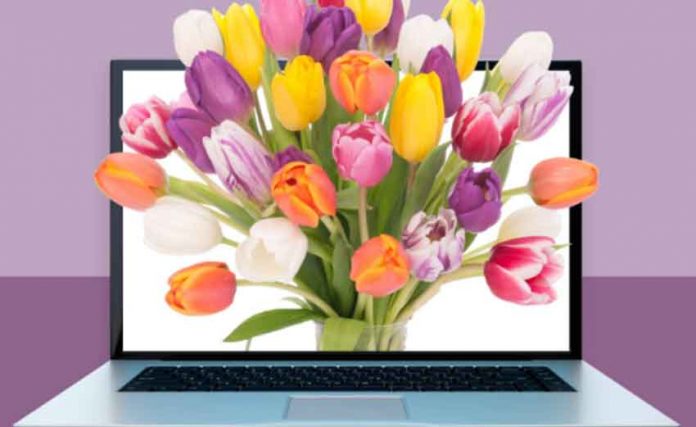Flowers are an age-old gesture of affection, thoughtfulness, and romance. They can express what words sometimes fail to convey, but the timing of when you send them is crucial. Send flowers too early, and you might come off as overeager. Send them at the wrong moment, and they might not have the desired effect. In this blog post, we will explore the best moments to send flowers when dating, ensuring that your gesture is not only well-received but deeply appreciated. Whether it’s to mark a special milestone or simply as a spontaneous act of affection, this guide will help you navigate the sometimes tricky world of floral gifting.
1. First Date: Is It Too Soon?
Sending flowers on a first date can be a bold move, so it’s essential to assess whether it suits the situation. For some, dating flowers can come across as a romantic and thoughtful gesture, setting the tone for the evening. However, for others, it may feel overwhelming or too formal. If the person you are dating has a more traditional view of romance, a small bouquet could be a charming way to start. That said, sending something more extravagant, like a dozen roses, might be too intense for a first meeting. The key lies in balancing your gesture with the context of the date.
When the atmosphere is casual—like a coffee date or a walk in the park—it may be best to skip the flowers, or opt for something simple, like a single daisy or sunflower. On the other hand, if the setting is more formal, such as a dinner at a nice restaurant, a small, elegant bouquet can be the perfect touch.
Tip: Understand your date’s style and comfort level with romantic gestures before deciding on dating flowers. A small, friendly arrangement is often safer than something overly romantic.
2. Milestones in a Relationship
Milestones—whether it’s your first anniversary, celebrating a promotion, or marking another significant event—are perfect opportunities to send flowers. These moments are often expected to be celebrated, and flowers can add a special touch that makes the occasion even more memorable. For anniversaries, roses are often the go-to flower, symbolizing love and passion. However, depending on your partner’s preferences, you could opt for something more unique or personal, such as their favorite flower or a seasonal bouquet.
If the milestone is less romantic and more personal, such as celebrating a job promotion or completing a significant goal, the type of flowers should reflect that. Bright and cheerful blooms like lilies, gerbera daisies, or sunflowers can convey pride and happiness without being too formal.
Tip: Tailor your flowers to the milestone. Choose roses for romantic moments and opt for more vibrant, cheerful flowers for non-romantic achievements.
3. Apologies and Making Amends
When words aren’t enough, flowers can be a powerful way to apologize. However, the gesture must be sincere and well thought out. Apologizing with flowers after a small disagreement can soften the tension, but when it comes to larger conflicts, sending flowers too soon might come across as trying to brush the issue aside without fully addressing it. In these cases, timing is key.
White lilies or white roses are popular choices when sending apology flowers because they symbolize peace and purity. Blue hyacinths also represent regret and a desire for reconciliation. Including a heartfelt note can make all the difference, as it helps convey the sincerity of your apology.
Tip: Don’t rely solely on the flowers. Be sure to include a thoughtful message that explains your feelings and shows genuine remorse.
4. Birthdays and Special Personal Occasions
Birthdays are the perfect occasion for sending flowers, and they allow for creativity and personalization. For a romantic partner, you might want to send a bouquet of their favorite flowers, or even a mix of classic, romantic blooms like roses and peonies. For a less romantic birthday gift, bright and cheerful flowers, such as tulips or sunflowers, work well.
Special personal occasions—like a promotion at work or completing a major life goal—are also great opportunities to send flowers. Celebrating these moments with an arrangement of vibrant, celebratory flowers can brighten the recipient’s day and show that you’re proud of their achievements.
When sending flowers for a birthday or personal occasion, timing can enhance the gesture. Having flowers delivered at the start of the day can set a joyful tone for the recipient, making the entire day feel more special.
Tip: Tailor the flowers to the occasion and relationship—romantic flowers for your partner, and bright, uplifting ones for non-romantic occasions.
5. “Just Because” Gestures
One of the most meaningful reasons to send flowers is simply because you’re thinking of someone. “Just because” flowers are spontaneous and often come as a delightful surprise, which can strengthen the connection in your relationship. These gestures don’t need to be extravagant—sometimes a single stem or a small mixed bouquet is all it takes to show someone you care.
Spontaneity plays a large role in these gestures, and it’s important that the flowers reflect a sense of thoughtfulness without feeling too formal or contrived. Wildflowers or mixed seasonal blooms can capture the carefree nature of sending flowers for no particular reason. This type of gesture is often received well because it feels organic and shows that the thought came from the heart.
Tip: Keep it simple and heartfelt. “Just because” flowers should feel spontaneous and thoughtful, rather than overly planned or elaborate.
6. After a Great Date: The Post-Date Gesture
If a date went well, sending flowers afterward can be a sweet way to leave a lasting impression. This is particularly effective when you want to express that you enjoyed the time spent together and are looking forward to more. However, the timing and the type of flowers matter. Sending flowers immediately after the date might seem over-the-top, while waiting a day or two allows the gesture to feel thoughtful and intentional rather than impulsive.
Choose flowers that reflect the mood of the date. For instance, a fun and playful date might be best followed up with a colorful and lively bouquet. If the date had a more intimate, romantic feel, consider sending something more classic, like roses or tulips, which convey deeper affection.
Tip: Be mindful of timing. Waiting a day or two allows the memory of the date to settle in, making the flowers feel like a reflection of that experience.
7. Long-Distance Relationships: Bridging the Gap with Flowers
Long-distance relationships often require extra effort to maintain emotional closeness. Flowers can serve as a tangible reminder of your affection, helping to bridge the physical distance between you and your partner. Regular flower deliveries—whether for a special occasion or just as a surprise—can keep the connection alive and show that you’re thinking of them, even when you’re miles apart.
Symbolism becomes important here, as certain flowers can carry deeper meanings in the context of long-distance relationships. Red tulips, for instance, symbolize undying love, while forget-me-nots represent remembrance and enduring affection. In a long-distance relationship, flowers don’t need to be extravagant or frequent; what matters is the thought behind the gesture.
Tip: Send flowers periodically, not too frequently, to keep the gesture meaningful. Choose flowers with symbolic meanings that reflect your feelings.
8. Holidays: Matching the Season with the Right Flowers
Holidays like Valentine’s Day, Christmas, or even lesser-known celebrations such as National Flower Day offer wonderful opportunities to send flowers. For romantic holidays like Valentine’s Day, red roses are often the traditional choice, symbolizing deep love and passion. However, don’t be afraid to branch out with flowers like orchids or tulips for a more unique expression of your feelings.
For holidays like Christmas, seasonal flowers such as poinsettias or amaryllis can be a festive way to celebrate with your partner. If you’re marking a lesser-known holiday, you can get creative with the types of flowers you send. Adding a holiday-themed note or card can further personalize the gesture and make it more festive.
Tip: Match the flowers to the holiday’s theme and tone, and include a card that reflects the spirit of the celebration.
9. Sending Flowers After a Conflict: Timing and Sensitivity
When sending flowers after a conflict, the key is sensitivity and timing. You want to ensure that the gesture is sincere and not perceived as a way to avoid addressing the issue. Depending on the nature of the conflict, it might be best to wait a few days before sending flowers, giving the other person time to process the situation.
Flowers that symbolize peace and reconciliation, like white lilies or lavender, are excellent choices for this situation. Make sure to include a heartfelt note that acknowledges the conflict and expresses your genuine desire to make amends.
Tip: Be patient and sensitive when sending flowers after a conflict. Allow space for healing and choose flowers that symbolize peace and reconciliation.
Flowers are a beautiful way to express emotion and thoughtfulness in a relationship, but timing and context are everything. By following these guidelines, you can ensure that your floral gesture sends the right message and strengthens your connection, no matter where you are in the dating journey.







